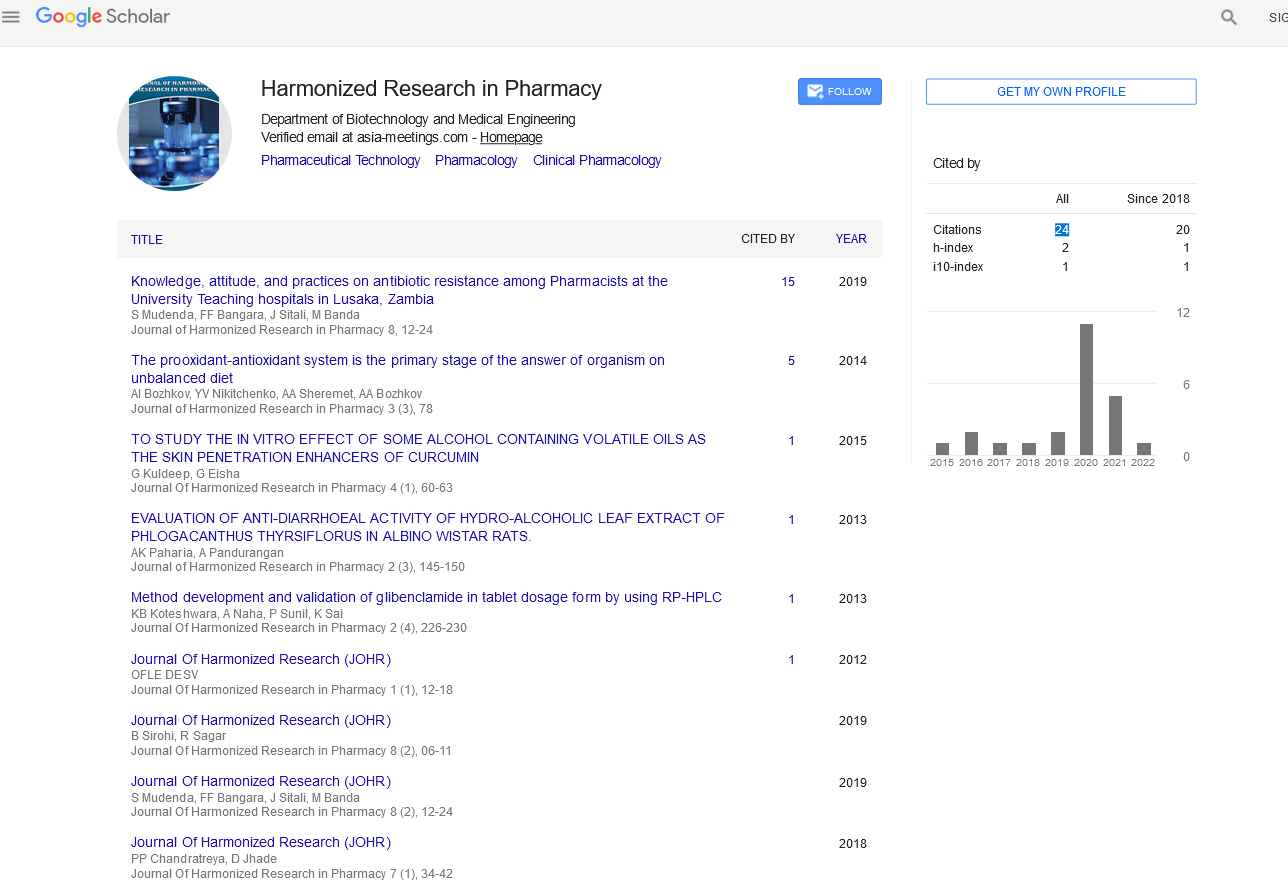Perspective - (2022) Volume 11, Issue 2
MODELS AND OBJECTIVES FOR A NOVEL DRUG DELIVERY SYSTEM
Bayram Paranhos*Received: May 27, 2022, Manuscript No. JHRP-22-69508 ; Editor assigned: May 30, 2022, Pre QC No. JHRP-22-69508 (PQ); Reviewed: Jun 13, 2022, QC No. JHRP-22-69508 ; Revised: Jun 20, 2022, Manuscript No. JHRP-22-69508 (R); Published: Jun 30, 2022, DOI: 10.30876/2321-0958.22.11.185
Description
It is obvious that the efficacy with which a drug ingredient is delivered at the site of action influences its effect in addition to its pharmacological effect. In order to increase the performance of drugs for maximum activity, several unique drug delivery methods have been developed thanks to the latter’s interest. When taken as prescribed, conventional instant release dosage forms keep medication concentrations within a therapeutic range. The medication concentration in plasma does, however, vary significantly. There have been numerous attempts to enhance the current therapy. Innovative medication delivery systems can boost a medicine’s bioavailability.
Modified release dosage forms can be broadly classified under four categories
• Delayed release
• Site specific release
• Receptor specific release
• Sustained release
Sustained release drug delivery system
Due to its extended effects, reduced side effects, and reduced frequency of administration, sustained release dosage forms are safer and more effective than conventional dosage forms. Reduced fluctuations in plasma drug concentration and less frequent delivery of medication are major benefits of sustained release dosage forms. This keeps the patient compliant and prevents frequent chemical imbalances in the blood caused by foreign objects. Variations in the gastric emptying process may cause some bioavailability issues, which could lead to changes in in-vivo performance.
Oral controlled release drug delivery system
The desired medicine’s bioavailability is influenced by a number of variables, including how quickly the drug reaches its effective plasma level, how long it stays there, and how it is not overtaken by pharmaceuticals that can be quickly absorbed. Drug concentration at the site of action, which is associated with plasma drug concentration, affects the pharmacological effect’s intensity. When the therapeutics index is reached, that is, the drug concentration is kept between the lowest effective and maximum safe level, the condition is optimal. Conventional dose forms frequently fall short of keeping the therapeutics index at its highest level.
Objective and advantages of Controlled Release Drug Delivery System (CRDDS)
• To maintain a steady therapeutic medication level while reducing the frequency of dosage.
• To keep the pharmaceutical reaction consistent.
• Lower the overall drug consumption.
• Reducing the need for nighttime dosage to improve patient compliance.
• Reducing adverse local and systemic consequences.
• Lower drug accumulation and plasma drug concentration variability
Dis-advantages of Controlled Release Drug Delivery System (CRDDS)
• The potential for dosage dumping.
• Reduced possibility of precise dose control and decreased systemic availability.
• Boost first-pass metabolism.
• During serious poisoning or intolerance immediate stoppage of pharmacological action is difficult.
• Depend on the residence time of dosage form in GIT.
Drug compounds that are particularly easily absorbed from the GIT and have a shorter half-life are frequently eliminated from blood circulation. A controlled release dosage form that releases the medication gradually into the gastrointestinal tract and sustains a constant drug concentration for an extended period of time can be developed to address this issue. The goal of CRDD is to make drugs more predictable and boost bioavailability.
Oral administration of CRDDS has some drawbacks, including decreased stomach retention and variable gastric emptying times. Formulation emptying from the gastric region is an ill-defined process, and the ability to lengthen and regulate the emptying duration is a valuable asset for dosage forms, allowing them to stay in the stomach longer than standard dosage forms do.

Google Scholar citation report
Citations : 147
Journal of Harmonized Research in Pharmacy received 147 citations as per google scholar report









